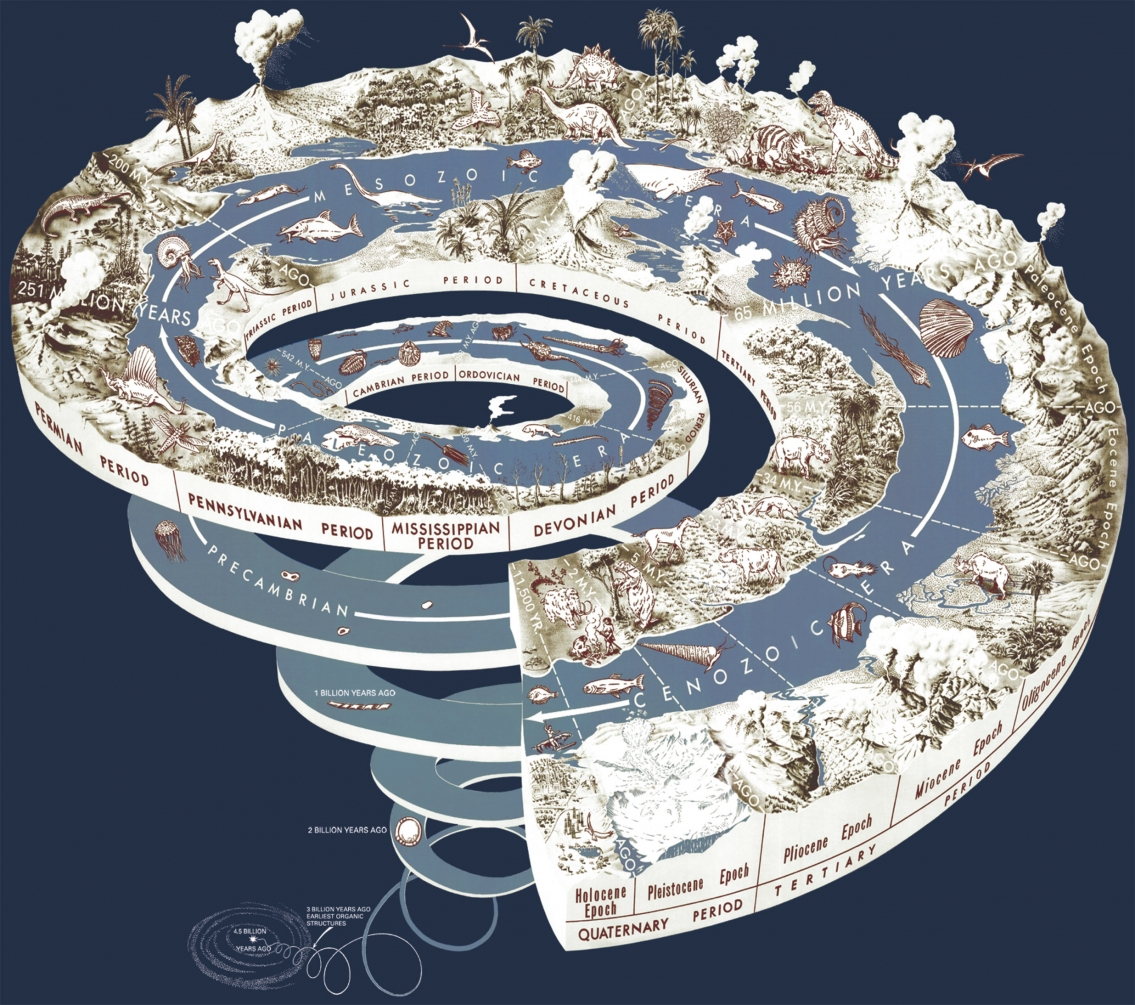Timelines
This Spiral Timeline Shows the History of Life on Earth
The Earth has evolved throughout billions of years to become the ground we walk on today. Since the earliest start of organic material 3 billion years ago, this spiral timeline, created by the United States Geological Survey (USGS), charts how life has evolved through different periods of time.
Click below to zoom
The Precambrian period is known by scientists as the earliest part of Earth’s history. During this time, continents began to form and an atmosphere that could harbor life. Early multi-celled creatures developed like worms and jellyfish. You can see in the visualization how life began to really start to flourish from the Precambrian into the Cambrian period which lasted about 55.6 million years. It is also the first time that the first vertebrates, fish, appeared in fossils.
Next came the Ordovician period. This period lasted for about 45 million years and saw modern sea life start to form. Next came one of the shortest periods in terms of evolution, the Silurian Period which only lasted about 28 million years. During this time a warm climate and high sea level allowed coral reefs and sponges to thrive. This spiral graph shows the next periods of life from the Devonian period, Mississippian period, Pennsylvanian period, Permian period, Triassic period, and Jurassic period. This may be one of the most familiar periods because everyone knows and loves the dinosaurs. What you may not know is that dinosaurs actually made a comeback during this period after they nearly went extinct at the end of the Triassic period. The Jurassic period also saw the development of oysters, crabs, lobsters, crocodiles, sharks, and bony fish. This graphic brings us all the way up to the Holocene Epoch period which is the most current period in Earth’s history.
